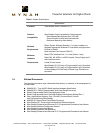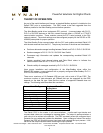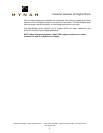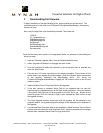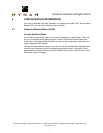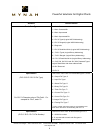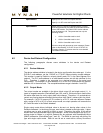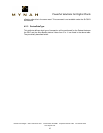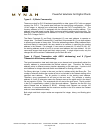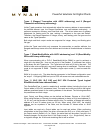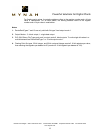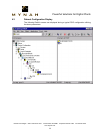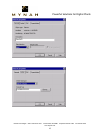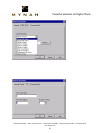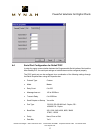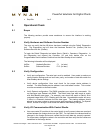
Powerful Solutions for Digital Plants
MYNAH Technologies 504 Trade Center Blvd. Chesterfield, MO 63005 Telephone 636 681-1555 Fax 636 681-1660
www.mynah.com
11
Types 0 – 3 (Basic Commands):
These are mainly for PLC-5 backward compatibility to older types of PLC with non-paged
memory like PLC-2. The special data fields are not used during configuration. All data
(16-bit integer or discrete) are written/read through the PLC-2 compatibility file. The
memory address in PLC-5 is assigned with the communication module address. This
address is an octal based number which can be set with dip switches on the module. For
example, if the KE module has an address of 13 octal (11 decimal), data will be accessed
from PLC-5 integer file N11.
The Basic Protected (0) and Basic Unprotected (2) use word address to operate on
integer data. The Basic Protected Bit (1) and Basic Unprotected Bit (3) use byte address
to operate on discrete or binary data. Since the addressing scheme differs between Basic
word and Basic bit commands, the user needs to be cautious in specifying the starting
address in the Dataset. For example, if user wants to access bit 0 in word 10 (N11:10),
the starting address needs to be 20 to convert word address into byte address. All four
commands support both single and block output mode. In single output mode, only the
changed bits will be written in addressed byte for Basic Bit write.
Types 4 (Typed Transaction with ASCII addressing) and 8 (Typed
Transaction with binary addressing):
The typed transactions treat each data type as an element and automatically adjust the
memory address to accommodate the defined element type. Therefore, the starting
address points to different memory location depending on the data type. It points to the
word address for integer data and double word address for floating point data.
For Binary data type, it points to the word, not the bit, address within the Binary file. The
number of element denotes the number of bits to be included in the Dataset starting at the
specified word address. The bit position is relative to the starting word address.
Therefore, every seventeenth bit will start at the next word. For example, a starting
address of 8 with 32 elements means the Dataset starts at the eighth word in the binary
file and contains 32 bits. The seventeenth bit will start at the ninth word. The bit position
in the PLC is specified by a slash (/) after the word address. Therefore, the first bit in the
above Dataset has an address of B3:8/0. Although each Dataset can contain 100
elements, it is recommended that the maximum number to be 96 to ensure the Dataset
ends on a word address boundary.
Both single and block output modes are supported for integer, binary, and floating point
file type.



